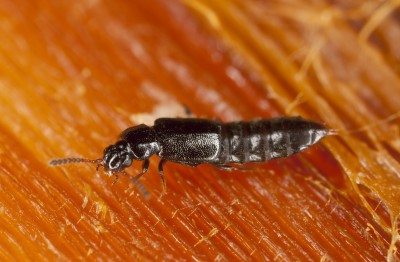
Rove beetles are predatory insects that can become your partner in controlling pest insects in the garden. Find rove beetle facts and information in this article. Read on to learn more.
What are Rove Beetles?
Rove beetles are members of the Staphylinidae family, which contains thousands of North American species. They range in length, though are typically about an inch (2.5 cm.) long. Rove beetles have the interesting habit of raising up the end of their bodies like a scorpion when disturbed or frightened, but they can’t sting or bite (they do, however, produce pederin, a toxin which can cause contact dermatitis if handled). Although they have wings and can fly, they usually prefer to run along the ground.
What Do Rove Beetles Eat?
Rove beetles feed on other insects and sometimes on rotting vegetation. Rove beetles in gardens feed on small insects and mites that infest plants, as well insects in the soil and on plant roots. Both the immature larvae and the adult beetles prey on other insects. Adult beetles on decaying animal carcasses are feeding on the insects that infest the carcass rather than the flesh of the dead animal.
The life cycle varies from one species to the next, but some larvae enter the pupae or larvae of their prey to feed, emerging a few weeks later as adults. Adult beetles have a large mandible that they use to grasp prey.
The Rove Beetle: Good or Bad?
Beneficial rove beetles can help eliminate harmful insect larvae and pupae in the garden. Although some species feed on a variety of insects, others target specific pests. For example, members of the Aleochara genus target root maggots. Unfortunately, they usually emerge too late to prevent most of the damage that root maggots cause.
The beetles are being reared in Canada and Europe in hopes of releasing them early enough to save important crops. Rove beetles aren’t yet available for release in the United States.
There are no special control measures for rove beetles. They do no harm in the garden, and once the insects or decaying matter that they feed on is gone, the beetles go away on their own.

